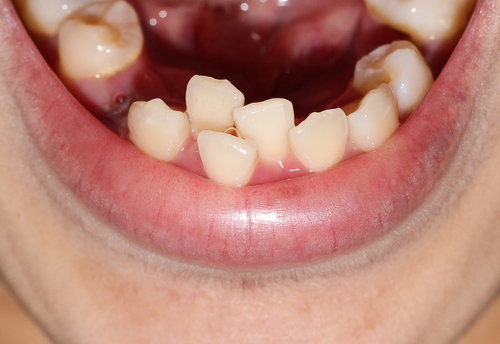Early Orthodontic Treatment for Children in San Juan Capistrano
When is the best time to begin orthodontic care?
 The American Association of Orthodontists recommends parents take their child in for an initial orthodontic evaluation at no later than age 7. At this early age, orthodontic treatment may not be necessary, but vigilant examination can anticipate the most advantageous time to begin treatment.
The American Association of Orthodontists recommends parents take their child in for an initial orthodontic evaluation at no later than age 7. At this early age, orthodontic treatment may not be necessary, but vigilant examination can anticipate the most advantageous time to begin treatment.
Dr. Sayed believes in early treatment and guiding natural growth and development in order to avoid any surgery or extensive, long term braces.
Dr. Sayed promotes improving not only the health of the teeth, but the appearance of your entire facial structure. His specialty in facial orthopedics provides the extensive knowledge needed. Our office strives for non-extraction orthodontic care in all but the most extreme cases, so that our patients can achieve a beautiful, full smile with all of their natural teeth
Why is age 7 considered the optimal time for screening?
By the age of 7, the first adult molars have erupted, establishing the back bite (occlusion). During this time, Dr. Sayed can evaluate the skeletal and dental growth pattern for any abnormalities. For example, crowding, spacing, cross-bites,overbite, underbite, open bite, gummy smiles, breathing abnormalities, possible snoring and sleep apnea that may occur in the future. All of the malocclusions could be corrected during early treatment. More importantly, Dr. Sayed can check for narrow palates and high palatal vaults. Early screening increases the chances for not only an incredible smile, but a healthier adult mouth.
Crossbite & Underbite
Crossbite and underbite treated with removable appliance. Crossbite corrected after six months of appliance treatment.
What are the benefits of early orthodontic evaluation?
Early evaluation provides both timely detection of problems, and greater opportunity for more effective treatment. Prudent intervention guides growth and development, preventing serious problems later. When orthodontic intervention is not necessary, Dr. Sayed can carefully monitor growth and development and begin treatment when it is ideal.
Early treatment can:
- Create room for crowded teeth.
- Create facial symmetry by influencing jaw growth.
- Reduce the risk of trauma to protruding front teeth.
- Preserve space for teeth that haven’t erupted.
- Reduce the need for tooth removal.
- Reduce or eliminate the need for jaw surgery
- Reduce treatment time with braces.
Early intervention allows Dr. Sayed to guide growth and development, preventing serious problems such as extractions and jaw surgery in the future.
Disadvantages associated with Narrow Palates & High Palatal Vault:
- Sleep disorders
- Mouth Breathing
- Snoring
- Tiredness
- Irritability
- Behavioral Problems
- Poor Concentration
- Easily Winded after activity
What Is Early Treatment?
First Phase Treatment with Jaw Expanders
Children sometimes exhibit early signs of jaw problems as they grow and develop. An upper and lower jaw that is growing too much or not enough or is too wide or too narrow can be recognized at an early age. If children over age 6 have these jaw discrepancies, they are candidates for first phase orthodontic treatment.
Since children are growing rapidly, they can benefit enormously from the first phase of orthodontic treatment because specific appliances can be prescribed that direct the growth of their upper and lower jaws toward an ideal relationship.
Thus, a good foundation can be established providing adequate room for eruption of all permanent teeth.
Resting/Observation period
After Phase I is completed, all appliances are removed and the eruption of your child’s permanent teeth will be monitored at office visits every four to six months. Retainers may or may not be recommended during this observation period.
Second Phase Treatment: Braces
It is important to understand that at the end of the first phase of treatment, the teeth are not in their final position. This will be accomplished in the corrective, second phase of treatment.
Each tooth has an exact location in the mouth where it is in harmony with the lips, cheeks, jaw joints, and other teeth. When this equilibrium is established, the teeth will function together properly. Here, they will remain healthy and look the most attractive. This is the goal of the second phase of treatment.
The second phase of treatment is initiated when most of the permanent teeth have erupted, and this phase usually requires braces on all teeth for approximately 12 to 18 months.



